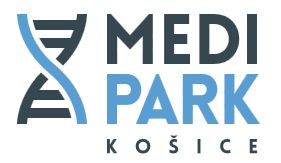The chief scientific personalities include Assoc. Prof. RNDr. Vladimír Zeleňák, PhD. a Prof. RNDr. Rastislav Varga, DrSc.
 Assoc. Prof. RNDr. Vladimír Zeleňák, PhD.
Assoc. Prof. RNDr. Vladimír Zeleňák, PhD.
Assoc. Prof. RNDr. Vladimír Zeleňák, PhD., is an expert in the field of inorganic chemistry and has long been engaged in the research into organised nanoporous materials based on SiO2, as well as on the basis of the MOF (metal organic framework) and introduced this dynamic and globally recognized issue within UPJŠ in Košice, but he also was its pioneer in Slovakia. He published the results of his work in 92 original scientific papers indexed in the WoS and Scopus, such as: Inorg. Chem., Dalton Trans., J. Phys. Chem. C, Chem., Chem. Mater., Phys. Rev., and others, and reports about 1,500 SCI responses to these works. From among experimental techniques, Assoc. Prof. Zeleňák introduced and develops the following at the UPJŠ workplace:
• the use of adsorption techniques for the characterization of inorganic compounds (Qantachrome Nova adsorption analyzer)
• methods of gas permeability research through porous membranes
• thermal methods for the study of compounds and materials (the Netzsch TG/DTA analyser coupled with the Aeolus MS analyser)
• new synthetic methods for the preparation of materials (solvo/hydrothermal synthesis methods, sol-gel, dip-coating, microemulsion methods).
He regularly reviews scientific works from the journals Microporous and Mesoporous Materials, Inorganic Chemistry, Chemical Engineering Journal, Catalysis Today, Nano Letters, Journal of Physical Chemistry C and others. He is a member of the Committee for the Defence of Doctoral theses in the field of Inorganic Chemistry. He is a guarantor at the Bachelor’s level of study in Chemistry and Co-guarantor at the Ph.D. degree study level in the field of Inorganic Chemistry. The results of the work of Assoc. Prof. Zeleňák may be documented by abundance of lectures at international conferences. He is a member of the Academic Board of the UPJŠ Faculty of Science and of the Academic Board of the SAS Institute of Geotechnology in Košice.
 Prof. RNDr. Rastislav Varga, DrSc.
Prof. RNDr. Rastislav Varga, DrSc.
Prof. R. Varga, in collaboration with the world’s top workplaces, worked out a detailed theory of the domain wall dynamics in thin magnetic wires with an emphasis on the impact of external parameters. This theory is currently used in the construction of various miniature sensors. in technical and medical applications. These have already been deployed in the European area (the Apnoe Monitoring Sensor developed for a Dutch company, the Tumour Detection Sensor, the Ti Implanter Temperature Sensor, the Mechanical Stress Sensors in Composites and other Building Materials, etc.). These sensors are based on the Technology Transfer of the Domain Wall Movement (the basic magnetism of materials) in a thin wire usable for measuring the temperature, mechanical stress, magnetic field, and the like.
R. Varga is a member of the Doctoral Dissertation Defence Committee SKVH Physics of Condensed Substances and Acoustics – 010304, a member of the RIS3 Research Agency of Material Research and Nanotechnology Working Group and a member of the APVV Programme “Supporting R & D in Enterprises and Encouraging Business Collaboration with Research Organizations in the period 2016-2019.
R. Varga is the founder and chairperson of the RVmagnetics a.s. Board of Directors, which is engaged in the transfer of technology using the motion of a single domain wall in thin magnetic wire to unique miniature temperature sensors, mechanical pressure, position, and so on.
 Assoc. Prof. RNDr. Zuzana Vargová, Ph.D.
Assoc. Prof. RNDr. Zuzana Vargová, Ph.D.
She specializes in the field of research into conditions of preparation and the preparation of complex transition metal compounds with biomedical and bioanalytical applications and is also involved in the development of materials based on Heusler alloys. She uses the following methods in her research: potentiometric and NMR titrations for the study of formation of complex particles in solution and the FTIR spectroscopy, CHN analysis, thermal analysis, X-ray analysis in the characterization of newly prepared materials.
 Assoc. Prof. RNDr. Adriana Zeleňáková, PhD.
Assoc. Prof. RNDr. Adriana Zeleňáková, PhD.
Assoc. Prof. Mgr. Adriana Zeleňáková, PhD. deals with the study of magnetic and structural properties of Fe- and Co- based magnetic nanoparticles with a nucleus/wall structure, as well as nanocomposites consisting of magnetic nanoparticles encased in a periodic porous matrix. She is an expert in exploring static and dynamic magnetic properties. She co-authored 43 original scientific CC publications with approximately 180 SCI citations. She has extensive experience with experimental techniques, such as: measuring magnetic properties using SQUID-based MPMS-XL 5 and MPMS7, the DLS method using the Zetasizer device, XANES, EXAFS, SAXS methods of structural analysis. She introduced and develops in the workplace the issues of nanomagnetism study of nanoparticle systems prepared by the nanocasting method or reverse micelle methods. This is especially the study of the impact of intra- and inter-particle interactions in the superparamagnetic nanoparticle sets, the study of non-equilibrium dynamics, and the state of superspin glass.
 Mgr. Miroslav Almáši, PhD.
Mgr. Miroslav Almáši, PhD.
The research Area of Mgr. M. Almáši, PhD. is primarily concerned with the development and application of porous polymeric coordination compounds known as the Metal-Organic Frameworks. These compounds are currently among the new ones, only briefly studied materials with a wide range of applications in many technology sectors. The research is based on the preparation of materials that are subsequently studied as adsorbents of gases (carbon dioxide, methane, di-hydrogen), as controlled release drug carriers, catalysts, ion exchangers, and their magnetic properties are also studied (magnetocaloric effect).
 RNDr. Dáša Halamová, PhD.
RNDr. Dáša Halamová, PhD.
RND. D. Halamová, PhD. is concerned with the synthesis, characterization, modification, and subsequent application of mesoporous materials, such as SBA-12, SBA-15, SBA-16, MCM-41, and MCM-48. The main objective of our work is potential application of mesoporous matrices as transport systems for the controlled release of selected types of drugs with analgesic, antiflogistic, and antirheumatic effects (NSAIDs – non steroidal anti-inflammatory drugs, e.g. Naproxen, Indometacin …). Closing and subsequent drug release are monitored by the impact of various stimuli (UV radiation, pH, temperature, magnetic field …). In the field of “drug delivery system”, closure and subsequent release from the matrix are investigated in particular for drugs in which it is desirable to control or to slow their release into the biological system in respect of a lower dose of the drug or a lower frequency of its administration into the body. This results in a significant reduction in the negative effects of the drug on the organism.
 RNDr. Pavol Hrubovčák, PhD.
RNDr. Pavol Hrubovčák, PhD.
RNDr. Pavol Hrubovčák, PhD. is a young scientist. He deals with the study of magnetic properties of nanoparticles using a SQUID-based device and the study of nanoparticles by microscopic techniques (HRTEM, SEM).

 Prof. RNDr. Rastislav Varga, DrSc.
Prof. RNDr. Rastislav Varga, DrSc. Assoc. Prof. RNDr. Zuzana Vargová, Ph.D.
Assoc. Prof. RNDr. Zuzana Vargová, Ph.D. Assoc. Prof. RNDr. Adriana Zeleňáková, PhD.
Assoc. Prof. RNDr. Adriana Zeleňáková, PhD. Mgr. Miroslav Almáši, PhD.
Mgr. Miroslav Almáši, PhD. RNDr. Dáša Halamová, PhD.
RNDr. Dáša Halamová, PhD. RNDr. Pavol Hrubovčák, PhD.
RNDr. Pavol Hrubovčák, PhD.











